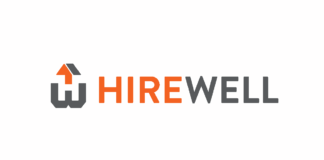
By Jeremy Bilsky, Senior Director and General Manager at Advance Partners
Achieving financial sustainability as a staffing firm means being able to start, maintain, and grow over the short- and long-term.
But what happens to financial sustainability in a high inflation, high interest environment? Inflation impacts every aspect of the economy – interest rates, the price of goods, investments, etc. For staffing, it contributes to the widespread problem of employee shortages.
Being sustainable can be difficult in this type of environment, which is why I put together some tips on how staffing firms can mitigate the effects of inflation and achieve financial sustainability even in challenging times.
High inflation and rising interest rates
Economists define inflation as a general increase in prices and a fall in the purchasing value of money. Supply chain issues, surging demand, and geopolitical factors like foreign wars all contribute to high inflation. In the US during 2022, the inflation rate hovered around 8%. For context, in the period of 2018 to 2021, inflation was around 0-4%. To combat inflation, the Federal Reserve raised interest rates four times by 75 basis points and then an additional 50 basis points, putting the prime rate at 7.5%. They say to expect more increases in 2023.
How does this impact staffing agencies and financial sustainability?
- Wages not rising with inflation leads to labor shortages, exacerbating existing issues stemming from the Great Resignation.
- Large employers able to offer higher wages puts a strain on your small-to-medium sized customers trying to compete.
- Employee retention becomes an issue when employees are job hopping to find higher wages.
- High interest rates and high inflation also affect bank loans and financial decisions for staffing firms, such as making commercial real estate decisions and conducting M&A.
Keys to financial sustainability
Achieving financial sustainability while in challenging economic times can be difficult, but not impossible. Here are some keys to financial sustainability for staffing firms:
1. Access to capital
It takes money to make money. After the initial startup capital to get your firm up and running comes ongoing working capital to maintain day-to-day operations and support growth. To access capital, you can self-finance, fund through equity infusion, take out a bank loan, or work with a specialty financing agency. Note that during times of uncertainty, you will often see banks and other traditional funding sources tightening credit requirements and raising rates.
2. Balancing profitability
Achieving the balancing act of profitability takes work. If your margins are too low, it may have a negative impact on your cash flow and increase stress throughout your organization. Low profits leave no room for revenue or expense fluctuations and limit your ability to reinvest, which can ultimately compromise your financial sustainability. Conversely, if your profitability is too high it may open you up to undercutting by lower-priced competitors, which can eat into your bottom line.
3. Comprehensive reporting
Taking the time to really assess your staffing business is critical to healthy, sustained growth. Creating a plan to review your finances on a regular basis allows you to adjust in time to reverse a negative trend or capture a unique positive opportunity. Whatever your method of secured capital, solid financial reporting will be required to obtain increased levels of capital support. And when it’s time to sell your business or grow through mergers and acquisitions, solid financials are a must.
4. Business planning
If you fail to prepare, prepare to fail! It can be surprisingly easy to stray from your set path to sustainable growth if you do not have a business plan to keep you on course. Your financial planning should be flexible enough to allow for market changes and unexpected opportunities, but strong enough to keep you from veering into dangerous, unsustainable territory.
Action steps
For the long-term financial health of your staffing business, consider taking these steps:
- Review your current and future capital needs and determine how you will address your anticipated growth
- Analyze and work to balance your profitability
- Assess and improve your reporting capabilities
- Start or review your business plan and see how you are measuring up to your outlined goals
I hope these financial sustainability tips have been helpful. While inflation is high and interest rates are rising, there are simple steps you can take to achieve sustainable growth over the long term.






